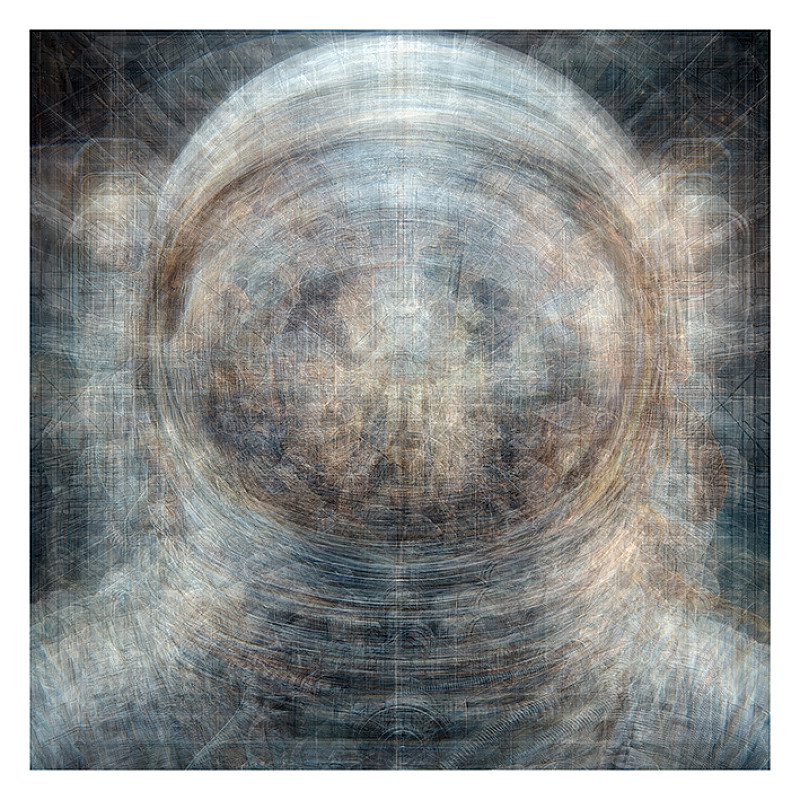- Untitled (Spaceman)
- ANDRE CLEMENTS
- Pigment print on 230 gsm art paper, water-stretched, deckled edges
- 1 of 1
- 54 x 54
André Clements: “for one, welcome our new machine collaborators.”
There’s a lot that is quite amazing, interesting and important about technology, some of it good, some of it bad. As an artist who began programming in the mid-1980s and has been visually creating for even longer, my work for “Alexa, make some art” reflects a meandering symbiotic dance between techne and artistry, tradition and exploration. I favour subtlety, nuance and depth through layering to synthesise images from diverse sources, ranging from original analogue work, through photography to computationally mediated and generated material aiming for integration.
“Multipartiality”—integrating multiple perspectives without claiming neutrality—leads to an engagement with “Object Oriented Ontology” trying to resist domination and informs the heuristic methods I apply in activities and decisions within my practice.
My pieces for the exhibition, such as “We Dance in Wittgenstein’s Scaffolding” and “Spaceman in Tesseract (Kaleidoscope w/ Compassionate Eyes)” utilise sophisticated computational tools to manually craft picture-objects that invoke the cinema of the mind—where interaction is deeply embedded in the conceptual, aesthetic, meta-textual, and perceptual layers.
Media and Methods: My toolkit includes digital photography, computational intelligence, and applied knowledge systems such as contemporary "AI", alongside traditional analogue techniques. I believe in the collaborative spirit, where boundaries, when necessary, are dissolved.
Viewpoint on New Technologies: “We all stand on the shoulders of giants” Innovations like the storage of paint in tin tubes catalyzed Impressionism, just as today’s multi-model knowledge/language models redefine artistic boundaries. The goodness or badness of these
The phrase “for one, welcome our new machine collaborators” is a playful twist on the now-iconic quote “for one, welcome our new computer overlords.” This latter phrase was popularized by Ken Jennings during his final appearance on the quiz show “Jeopardy!” after losing to IBM’s Watson, an artificial intelligence computer system. In what is commonly thought of as the original use of the phrase, Simpsons character Kent Brockman, a fictional newscaster, upon seeing an extreme close-up shot of an ant, talked about humans’ future

